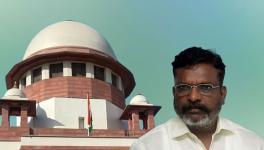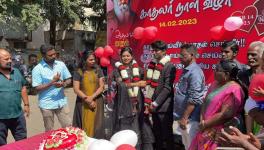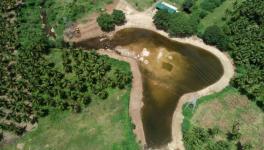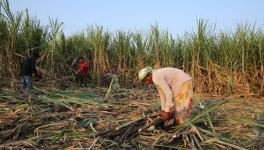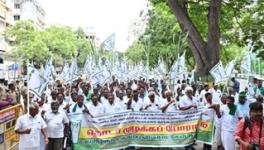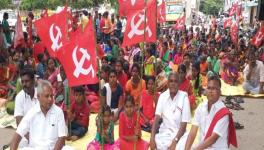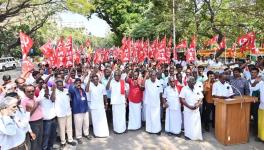Experts Question ‘Lack’ of Transparency in Tamil Nadu Health Assemblies
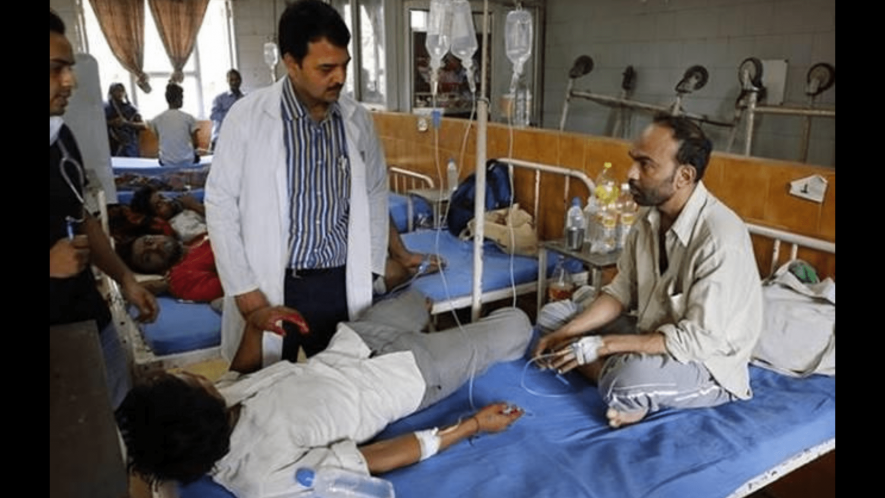
Representational Image. Image Courtesy: PTI
For the second year in a row, the Tamil Nadu government is holding district-level health assemblies to enhance health indices in respective regions. Sixteen out of 38 districts were chosen for 2022-23. The assemblies aim to increase transparency and encourage community participation.
Health experts told Newsclick that it is a welcome exercise, but cited its “restrictive” implementation as a shortcoming. “If implemented well, health assemblies are a powerful mechanism to increase people’s participation and can improve the health system and make it more responsive,” said M Karuna, a social audit consultant working on health.
“This is an example for other states to follow. Undoubtedly, the spirit is good though the state should not be doing it as routine work to tick off its deliverables list. They need to do it with more understanding of the community’s role” said Dr Sundararaman.
The assemblies are one of the eight disbursement-linked indicators (DLI) outlined by the World Bank (WB), which provides funds when targets are achieved.
BACKGROUND
These assemblies are a part of the Health System Reform Programme, announced by the Edappadi K Palaniswami-led AIADMK government. Its operational plan was developed in discussions with the WB task team in 2019-20.
The assemblies, however, were implemented in March 2022 due to the lockdown. Chief minister MK Stalin inaugurated the first assembly. In 2021-22 most assemblies were held online.
Information about when and where block and district health assemblies are held is not publicly available. Meetings are held at the village level under the purview of the health sanitation committee. Subsequently, resolutions are passed on to the block medical officer, some of which are resolved at this level and others passed on to the district.
The adopted resolutions are placed in the district health assemblies, where 150-200 people participate, primarily healthcare personnel and also elected representatives and the public.
‘TRACK RESOLUTIONS’
However, transparency and accountability are missing. “In each district, there are hundreds of resolutions, but only 5 or 10 are brought to the state, and some GOs might get issued to address these. But what about the other resolutions?” asked Karuna.
The state health assembly will be held in March 2023. “All resolutions should be categorised and entered into a public management information system (MIS). There should be individual responses to each resolution which should also be publicly available” he said.
MIS is a planned system of collecting, storing and disseminating data in the form of information. Health experts worry about the limited amount of funds allotted to resolve concerns raised in the assemblies. They feel that the assemblies should help get a number for fund requirements that can be incorporated into the state Budget.
‘MAIN PURPOSE UNMET’
The idea of assemblies is to bring the views and requirements of people’s health needs to the policymaker’s table through discussions and deliberation. But health experts say this objective is not fulfilled.
“The main purpose of assemblies is still not met. They are functioning like internal department review meetings,” said Dr T Sundararaman, former global coordinator of the People’s Health Movement. “Not many NGOs are participating in assemblies. The few involved are service delivery organisations. More rights-based organisations and people representing weaker and vulnerable sections should be incorporated.”
‘GATEKEEPING FROM STATE’
Participants lack the understanding that discussions could be held on wide-ranging topics, including Anganwadi, water, roads and other facilities, healthcare experts said.
“Participants’ concerns get restricted to infrastructure gaps, such as the lack of toilets or compound walls and current selective services,” Sundararaman said. “Broader range of health conditions, such as human resource gaps, weak emergency services, etc., do not come up.”
They also raised concerns about the informal gatekeeping from the state government and health department, which undermine assemblies.
“Staff shortage is a big issue, but participants are told that all positions have been filled and there are no vacancies and are asked not to raise this issue,” said Karuna. He insisted that “the department should present details on the sanctioned posts and the ones filled. They should also share whether the sanctioned posts comply with the Indian Public Health Standards.”
A shortfall of health personnel could have big repercussions. “The shortage of frontline staff like Anganwadi workers and nurses will lead to increased malnutrition, low immunisation rates, and poor health outcomes,” he said.
Get the latest reports & analysis with people's perspective on Protests, movements & deep analytical videos, discussions of the current affairs in your Telegram app. Subscribe to NewsClick's Telegram channel & get Real-Time updates on stories, as they get published on our website.










